
When neurons change, but behavior doesn’t: Excitability changes driving representational drift
New preprint of work with Christian Machens: www.biorxiv.org/content/10.1...
@hayleybounds.bsky.social
Neuroscience postdoc @ Columbia University with the Losonczy & Fusi labs. Schmidt Science Fellow. Formerly of the Adesnik lab at UC Berkeley

When neurons change, but behavior doesn’t: Excitability changes driving representational drift
New preprint of work with Christian Machens: www.biorxiv.org/content/10.1...
Certainly true! These two things are related but not the same. This is actually a bit of a misstatement in the article as in the study we don’t look at response strength but at neurons based on their visual information (measured by ROC) metrics and find that they do not appear to be weighted more.
02.08.2025 14:06 — 👍 3 🔁 0 💬 1 📌 0Oh! Seems like a big deal, this. Makes sense too. Like, how would the rest of the brain know which neurons to sample, and if it did already know what the stimulus is, then it wouldn't need those neurons' signals to classify it.
02.08.2025 12:27 — 👍 5 🔁 2 💬 1 📌 0Thanks to @thetransmitter.bsky.social and @ldattaro.bsky.social for this coverage of our recent paper!
01.08.2025 01:56 — 👍 20 🔁 9 💬 2 📌 1This is a simplistic but commonly-held view about how science actually works.
Doing rigorous& impactful science often means ignoring (some) null results.
Intermediate results, null and positive, arise on the way to a publishable contribution, and not all are perfectly rigorous.🧪#neuroscience 1/

A new study led by @timothysit.bsky.social reveals that different layers of mouse V1 integrate visual and non-visual signals differently.
Activity is dominated by vision (or spontaneous fluctuations) in L2/3 and by movement in L5. This leads to different geometries.
www.biorxiv.org/content/10.1...
Reminder that we still have time to fight this! This bill is being crafted & debated in the coming days and weeks. Organize NOW to do outreach and get people in your neighborhood contacting their reps. @standupforscience.bsky.social has resources. Instructions for Postcards-for-Science are here:
07.07.2025 14:06 — 👍 15 🔁 11 💬 1 📌 0
a still of mahmoud khalil as he exited ice detention. he’s wearing a long sleeve khaki button up and a white and black keffiyeh wrapped around his neck. he’s got a big smile on his face and his fist raise in the air, defiant and proud.
Mahmoud Khalil is free.
21.06.2025 00:17 — 👍 29252 🔁 4403 💬 268 📌 242Breaking: The Trevor Project received a stop-work order last night on its contract with the national 988 suicide prevention hotline. The Trump administration is eliminating the option for LGBTQ callers to the hotline to press 3 and connect with someone who specializes in LGBTQ mental health.
18.06.2025 13:59 — 👍 7986 🔁 4426 💬 256 📌 1328
The firing of neural populations is high-dim even if their subthreshold activity is low-dim! This work by @bio-emergent.bsky.social and @haydari.bsky.social shows how, with a solvable model, a data analysis technique, and data from mouse visual cortex: www.biorxiv.org/content/10.1...
09.06.2025 11:49 — 👍 90 🔁 29 💬 0 📌 1New #NeuroAI #compneurosky preprint! To better understand how target-directed learning works in the brain, we sought to engineer an artificial neural network capable of solving complex image classification tasks that comprises only experimentally-supported biological building blocks. (1/15)
27.05.2025 18:40 — 👍 36 🔁 17 💬 1 📌 1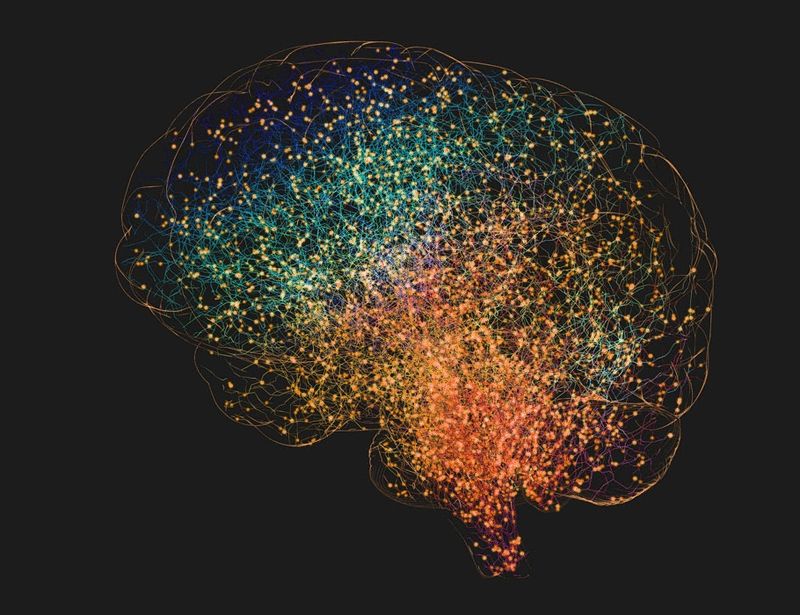
We're now appreciating how the immune and nervous systems communicate across body & brain, and there's still more to explore!
Had a fun time co-writing this with some amazing immunologists and neuroscientists @nickmroz.bsky.social @arimolofskylab.bsky.social @annamolofskylab.bsky.social 😎🧠
But also we try to be clearer on this in the paper but it’s hard in short form- we show that visual/task coding properties don’t determine read out but read out based on projection target is possible. I’d love to test that directly in the future!
18.05.2025 22:18 — 👍 2 🔁 0 💬 0 📌 0Yeah this is an important point. Recurrent excitation in V1 could mean that neurons are recruiting more neurons and so they recruit neurons with all the important projection targets. I believe the great majority of L2/3 neurons connect to L5 which is an important output route.
18.05.2025 22:10 — 👍 0 🔁 0 💬 1 📌 0But I wouldn’t be surprised if we still find the strategy is a bit different than that predicted by decoders! Like Jin et al 2019 showing that mice don’t seem to use negative weights on anti tuned neurons in their read out for orientation discrimination, even though that’s probably helpful
18.05.2025 22:06 — 👍 2 🔁 0 💬 0 📌 0I’d speculate I’d see the same in other discrimination tasks where averaging regardless of neural vis properties is viable. But different oris of equal contrast stimuli drive very similar average V1 activity, so that presumably needs different strategy. Marshel et al 2019 also supports this idea.
18.05.2025 22:04 — 👍 5 🔁 0 💬 1 📌 0I definitely don't think I would've gotten the same results in several common discrimination tasks (ie orientation discrimination). But, in addition to your results, Gauld et al's 2024 photostim results are also consistent with averaging occurring in discrim when the task is amenable to it.
17.05.2025 21:23 — 👍 2 🔁 0 💬 2 📌 0Take that with a grain of salt though since this spontaneous dataset isn’t huge!
17.05.2025 21:14 — 👍 1 🔁 0 💬 0 📌 0Thanks! We did look at this a little. Generally PCA pulls out components related to visual or task variables so you get the same results. But I also ran PCA on only intertrial activity and didn’t see any link between weights and behavioral relevance
17.05.2025 21:13 — 👍 0 🔁 0 💬 1 📌 0I’m thrilled to announce that I will start as a presidential assistant professor in Neuroscience at the City U of Hong Kong in Jan 2026!
I have RA, PhD, and postdoc positions available! Come work with me on neural network models + experiments on human memory!
RT appreciated!
(1/5)
These very cool findings match up perfectly with our human psychophysics data from this paper: jov.arvojournals.org/article.aspx...
Brains are fine using dumb (aka suboptimal) strategies when they can get away with it.
This argues that downstream regions summate V1 activity without preferentially weighting more informative neurons to make sensory decisions in this task. Why use a suboptimal strategy? Speculatively, this generalizable strategy may be better in unpredictable natural environs.
15.05.2025 16:38 — 👍 9 🔁 1 💬 1 📌 0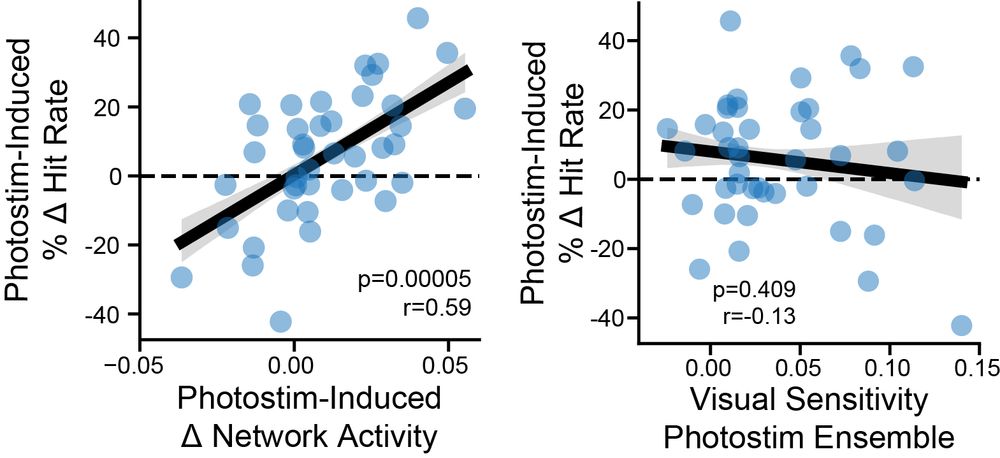
We found that the visual sensitivity of photostimulated ensembles did not predict the change in behavior - instead the overall impact on network activity (both directly via photostimulation and indirectly via recurrent impacts) was strongly predictive of behavioral change (4/5)
15.05.2025 16:38 — 👍 7 🔁 0 💬 1 📌 0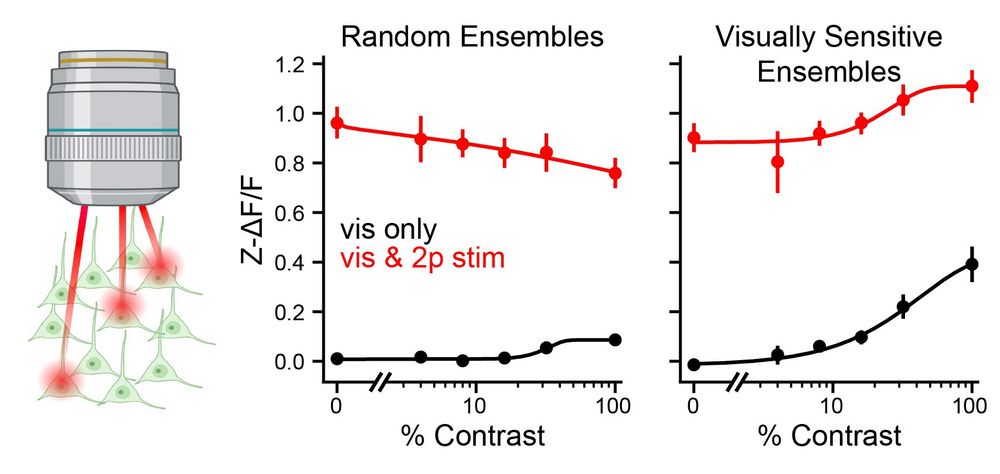
Left, a schematic showing targeted two-photon photostimulation of pyramidal neurons. Right, two graphs showing the visual only and visual + photostimulation responses of neural populations - the random group has low visual responses while the visually sensitive groups have strong responses.
If this more optimal strategy is used, photostimulating visually sensitive ensembles should more positively impact detection performance than photostimulating random ensembles. Using targeted optogenetics, we photostimulated ensembles with different visual sensitivity in behaving animals (3/5)
15.05.2025 16:38 — 👍 5 🔁 0 💬 1 📌 0
Left, a head-fixed mouse performing a contrast detection task for water reward. Center, diagrams of decoding strategies: either unweighted or weighted decoders. In unweighted, three neurons are connected to a logistic function by equally weighted lines, while in the weighted the lines vary in thickness. Right, a graph showing data of decoding results for the two decoders across contrasts. At all contrasts, the weighted decoder does much better
This is surprising because, although V1 responds monotonically to contrast, so an unweighted read out can solve contrast detection, more strongly weighting more visually sensitive neurons is much more optimal (2/5)
15.05.2025 16:38 — 👍 7 🔁 0 💬 1 📌 0Excited to share my PhD paper! In it, we use targeted 2-photon optogenetic stimulation to determine how V1 activity is read-out in a detection task. We found that network influence, not visual coding properties, predicted the impact of ensembles on behavior - contradicting our expectations (1/5).
15.05.2025 16:38 — 👍 104 🔁 35 💬 5 📌 2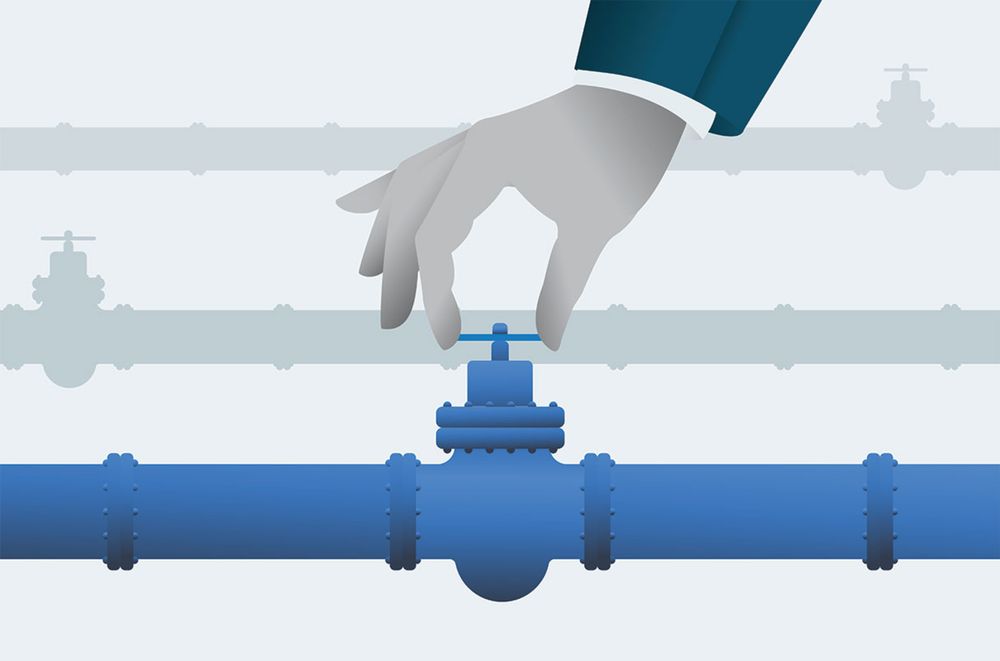
The Deaf Scientists Pipeline in Rochester, NY offers support for students and researchers from high school to postdoctoral levels. Now, due to NIH funding cuts, this one-of-a-kind initiative has been dismantled. My recent story for @science.org
07.05.2025 15:41 — 👍 47 🔁 36 💬 1 📌 3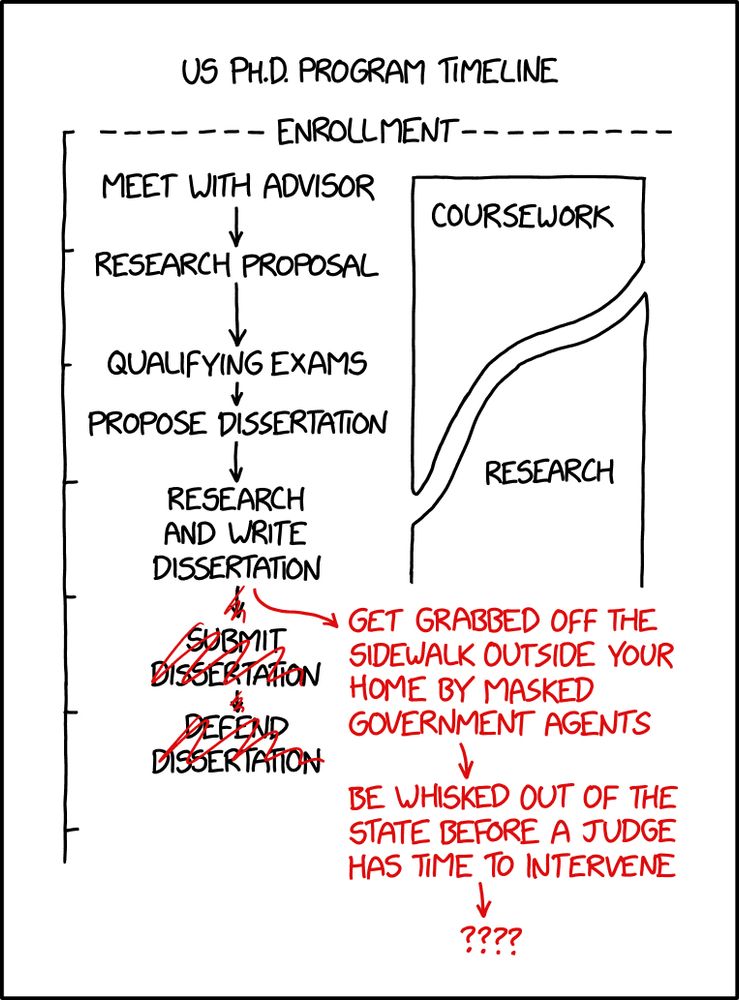
PhD Timeline xkcd.com/3081
25.04.2025 15:32 — 👍 60708 🔁 20856 💬 610 📌 840Check out some of our locus coeruleus reconstructions - the average fully reconstructed LC neuron is about 30 cm in length (in a mouse brain that spans ~1.3 cm front to back)
15.04.2025 20:40 — 👍 45 🔁 11 💬 1 📌 1If you do multi-plane 2p imaging, you may see the same cells across planes. We built Suite3D exactly for this purpose! It removes duplicates, corrects axial movement, finds more cells with less noise, much faster than alternatives.
github.com/alihaydarogl...
Try on your data, and reach out!